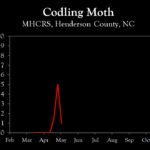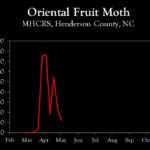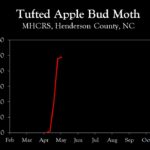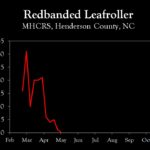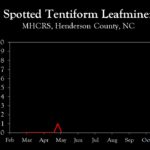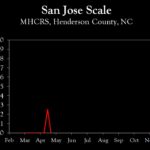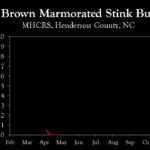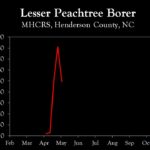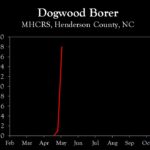WNC Orchard Insect Pest Populations – May 5, 2025
go.ncsu.edu/readext?1071215
en Español / em Português
El inglés es el idioma de control de esta página. En la medida en que haya algún conflicto entre la traducción al inglés y la traducción, el inglés prevalece.
Al hacer clic en el enlace de traducción se activa un servicio de traducción gratuito para convertir la página al español. Al igual que con cualquier traducción por Internet, la conversión no es sensible al contexto y puede que no traduzca el texto en su significado original. NC State Extension no garantiza la exactitud del texto traducido. Por favor, tenga en cuenta que algunas aplicaciones y/o servicios pueden no funcionar como se espera cuando se traducen.
Português
Inglês é o idioma de controle desta página. Na medida que haja algum conflito entre o texto original em Inglês e a tradução, o Inglês prevalece.
Ao clicar no link de tradução, um serviço gratuito de tradução será ativado para converter a página para o Português. Como em qualquer tradução pela internet, a conversão não é sensivel ao contexto e pode não ocorrer a tradução para o significado orginal. O serviço de Extensão da Carolina do Norte (NC State Extension) não garante a exatidão do texto traduzido. Por favor, observe que algumas funções ou serviços podem não funcionar como esperado após a tradução.
English
English is the controlling language of this page. To the extent there is any conflict between the English text and the translation, English controls.
Clicking on the translation link activates a free translation service to convert the page to Spanish. As with any Internet translation, the conversion is not context-sensitive and may not translate the text to its original meaning. NC State Extension does not guarantee the accuracy of the translated text. Please note that some applications and/or services may not function as expected when translated.
Collapse ▲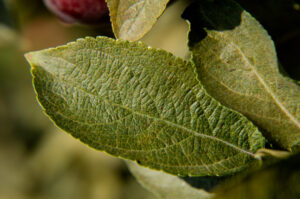 Codling Moth: The cooler weather pattern has slowed degree-day accumulations, and consequently codling moth development has fallen behind last week’s predictions. As of May 5, Henderson and Cleveland County have accumulated 190 and 340 DD, respectively. With the initial egg hatch of the first generation starting at 250 DD, orchards at lower elevations should have applied an insecticide by this time. Under moderate codling moth pressure, the diamides (Altacor, Exirel, Verdepryn or Voliam Flexi) and Delegate will provide two weeks’ residual control. Shorter interval applications may be necessary under intense codling moth pressure or where rainfall has prematurely reduced residue activity.
Codling Moth: The cooler weather pattern has slowed degree-day accumulations, and consequently codling moth development has fallen behind last week’s predictions. As of May 5, Henderson and Cleveland County have accumulated 190 and 340 DD, respectively. With the initial egg hatch of the first generation starting at 250 DD, orchards at lower elevations should have applied an insecticide by this time. Under moderate codling moth pressure, the diamides (Altacor, Exirel, Verdepryn or Voliam Flexi) and Delegate will provide two weeks’ residual control. Shorter interval applications may be necessary under intense codling moth pressure or where rainfall has prematurely reduced residue activity.
In Henderson County and similar elevations, 250 DD is now predicted to occur on Sunday, May 10. Hence, in orchards with consistent captures of codling moth in pheromone traps, the ideal timing for an initial insecticide application is this weekend or early next week. In orchards with low codling moth populations (e.g., no recent history of damage, and low and sporadic pheromone trap captures), it is recommended to delay an initial application until about 350 DD, now predicted to occur late next week. Finally, in orchards with mating disruption and low trap captures, an insecticide is usually not required until about approximately 600 DD, which coincides with optimum timing of tufted apple bud moth; this usually occurs in the first or second week of June.
European Red Mite: For those growers choosing to make a preventive miticide application, we are approaching that window of opportunity, generally considered to be between first and second cover spray. However, an alternative timing is to make the application when mites are present at 0.5 to 1 per leaf.
Studies last year confirmed that ERM populations in some orchards were exhibiting increased tolerance to Zeal, which emphasizes the importance of rotating products with different modes of action (MOA). When choosing a product to rotate with Zeal, it is important to remember that Apollo and Savey have similar modes of action to Zeal; both are in IRAC MOA Group 10 (Apollo and Savey 10A, Zeal 10B), so rotating with these products is not recommended. Two other common preventive materials are Agri-Mek (MOA 5), which should be applied at petal fall for best results, and Envidor (MOA 23). Envidor has activity against all mite life stages and also has long residual activity.
Preventive miticide use increased over the last 10 years with the appearance of the brown marmorated stink bug (BMSB) and reliance on pyrethroids to control this insect. Before that time, miticide use was much lower due to biological control. Although no systematic surveys have been conducted, predatory mite populations in commercial orchards were commonly observed last year, suggesting that they have adapted to pyrethroids. For this reason, it would be beneficial to forego preventive miticide use in some orchards to see if we have returned to the situation where biological control alone can provide effective control of ERM.
Learn more about southeastern apple insect pests at the Apple Insect Management page.
2025 Average Weekly Trap Captures
| HENDERSON COUNTY | |||
| Insects per trap | |||
| Apr 21 | Apr 28 | May 5 | |
| Codling moth | 1.5 | 5.0 | 1.0 |
| Oriental fruit moth | 54.5 | 23.0 | 12.0 |
| Tufted apple bud moth | 20.0 | 48.0 | 49.0 |
| Redbanded leafroller | 5.0 | 1.0 | 0.0 |
| Obliquebanded leafroller | n/a | set | 1.0 |
| Lesser appleworm | n/a | set | 14.0 |
| Apple maggot (research orchards) | n/a | n/a | n/a |
| Apple maggot (abandoned orchard) | n/a | n/a | n/a |
| Brown marmorated stink bug (commercial) | n/a | n/a | 1.1 |
| Brown marmorated stink bug (unsprayed research orchard) | 0.0 | 0.0 | 0.0 |
| Spotted tentiform leafminer | 0.0 | 0.0 | 0.0 |
| Dogwood borer | 0.0 | 1.0 | 18.0 |
| Peachtree borer | n/a | set | 0.0 |
| Lesser peachtree borer | 51.0 | 81.0 | 49.5 |
| San Jose scale | 0.0 | 2.5 | 0.0 |
*Note that these averages illustrate only the timing of insect emergence and fluctuations in populations, and are not representative of population levels in any given orchard. The only way to have an accurate assessment of an individual orchard’s populations is to set up traps in that orchard.
2025 Accumulated Degree Days
| HENDERSON COUNTY | ||||
| Apr 21 | Apr 28 | May 5 | ||
| Codling moth (Biofix: April 21) | Biofix | 116 | 202 | |
| Oriental fruit moth (Biofix: March 17) | 304 | 413 | 666 | |
| Tufted apple bud moth (Biofix: April 14) | Biofix | 111 | 343 | |



